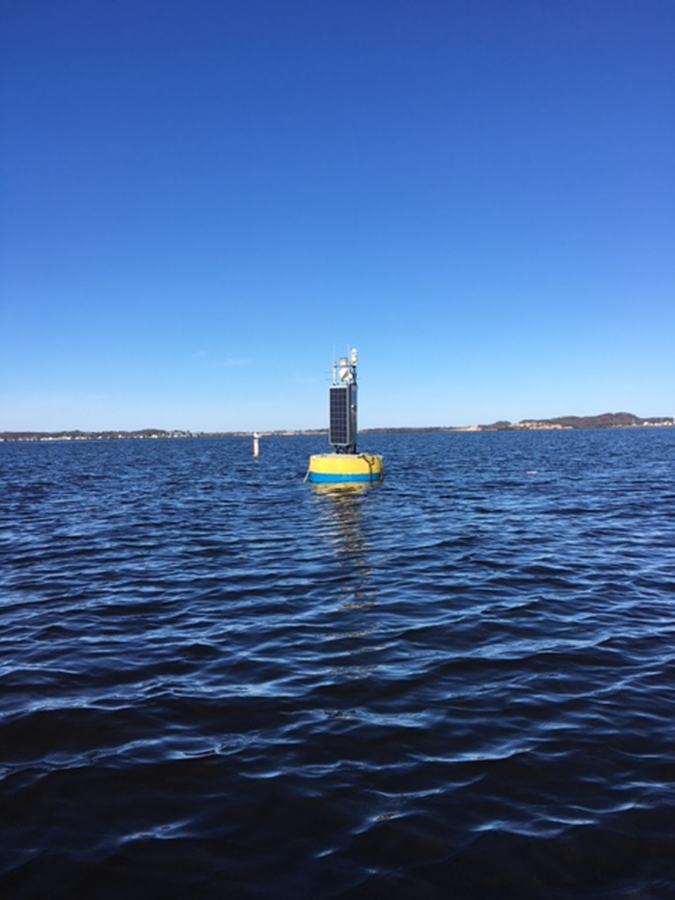Summer 2017 eNewsletter
Partner Research Feature
Understanding Muskegon Lake – a Great Lakes Estuary under Stress

Figure 1. Location and depth (Bathymetry) of Muskegon Lake, MI.
Like many areas of the Great Lakes and their connecting waterways, the Muskegon Lake drowned river-mouth estuary (Figure 1) is plagued by the scientifically complex and economically damaging water quality issues of harmful algal blooms (HABs) and low oxygen conditions, or hypoxia. Located on the eastern shore of Lake Michigan, the Muskegon Lake estuary is listed as an EPA Area of Concern (AOC) and a NOAA Habitat Blueprint focus area due to its historical contamination and habitat degradation. The types of human-induced water quality issues experienced by this system make it the perfect model to study and relate to larger lakes and coastal estuaries. If we can determine what is causing HAB formation, what makes HABs release toxins, and what leads to hypoxia, we can help inform efforts to restore Muskegon Lake and similarly affected systems.
With funding from a 2016 CIGLR Postdoctoral Fellowship, Dr. Qianqian Liu of Grand Valley State University is developing an advanced model to better understand the physical and biogeochemical processes at work in Muskegon Lake. Her 3-dimensional model will systematically investigate the Muskegon Lake estuary ecosystem and track changes in primary production, HABs, hypoxia. The model will also assess how water movement within the lake affects these ecological variables.

Figure 2. Muskegon Lake Observatory Buoy (www.gvsu.edu/buoy).
Once completed, Dr. Liu will link the Muskegon Lake model to both the NOAA Lake Michigan-Huron Operational Forecast System (LMHOFS) and a Muskegon River watershed model, for integrated modeling of the watershed-estuary-Great Lakes system. Her modeling work will use data from the Muskegon Lake long-term monitoring program and the Muskegon Lake buoy (www.gvsu.edu/buoy/; Figure 2).
The new Muskegon Lake model will inform ongoing ecosystem-based management and recovery of this impaired ecosystem – with applicability to other coastal and estuarine systems.
About the Author
Qianqian Liu received her M.S. and Ph.D. degrees in Physical Oceanography from the University of Rhode Island and previously completed a postdoctoral appointment at the University of Maine School of Marine Sciences. She was the recipient of the 2016 CIGLR Postdoctoral Fellowship, awarded to Grand Valley State University. Drs. Eric Anderson at NOAA GLERL and Bopaiah Biddanda at Grand Valley State University are her fellowship mentors.
Related Articles & Resources
